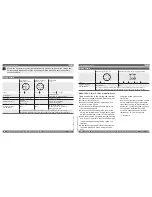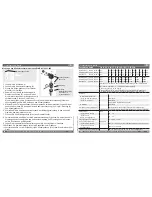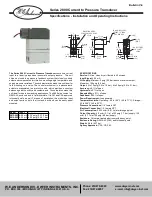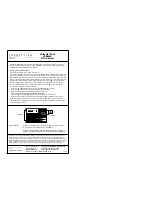
2132926.07 GB/D/F/E 03/2010
6
WIKA Operating instructions/Betriebsanleitung/Mode d'emploi/Instrucciones de servicio IS-2X
2132926.07 GB/D/F/E 03/2010
7
WIKA Operating instructions/Betriebsanleitung/Mode d'emploi/Instrucciones de servicio IS-2X
5. For your safety
5. For your safety
GB
Select the appropriate pressure transmitter with regard to scale range,
performance and specific measurement conditions prior to installing and
starting the instrument.
Observe the relevant national regulations (e.g.: IEC 60079-14, NEC, CEC)
and observe the applicable standards and directives for special applications
(e.g. with dangerous media such as acetylene, flammable gases or liquids
and toxic gases or liquids and with refrigeration plants or compressors).
If you do not observe the appropriate regulations, serious injuries and/
or damage can occur!
Open pressure connections only after the system is without pressure!
Please make sure that the pressure transmitter is only used within the overload threshold
limit all the time!
Observe the ambient and working conditions outlined in section 7 „Technical data”.
Ensure that the pressure transmitter is only operated in accordance with the provisions i.e.
as described in the following instructions.
Do not interfere with or change the pressure transmitter in any other way than described in
these operating instructions.
Remove the pressure transmitter from service and mark it to prevent it from being used
again accidentally, if it becomes damaged or unsafe for operation
Take precautions with regard to remaining media in removed pressure transmitter.
Remaining media in the pressure port may be hazardous or toxic!
Have repairs performed by the manufacturer only.
Information about material consistency against corrosion and diffusion can be found in our
WIKA-Handbook, 'Pressure and Temperature Measurement'.
6. Packaging / 7. Starting, operation
GB
6. Packaging
Has everything been supplied?
Check the scope of supply:
Completely assembled pressure transmitters; with flush version IS-21 including pre-
assembled sealings and protection cap.
EC-type examination certificate and Control Drawing (FM, CSA)
Inspect the pressure transmitter for possible damage during transportation. Should
there be any obvious damage, inform the transport company and WIKA without delay.
Keep the packaging, as it offers optimal protection during transportation (e.g. chan-
ging installation location, shipment for repair).
Ensure that the pressure connection thread and the connection contacts will not be
damaged.
In order to protect the diaphragm, the pressure connection of the instrument IS-21-S, -F is
provided with a special protection cap.
Remove this protection cap only just before installing the pressure transmitter in order
to prevent any damage to the diaphragm or the thread.
Keep the protection cap of the pressure connection thread and the diaphragm for
later storage or transport.
Mount the protection cap when removing and transporting the instrument.
7. Starting, operation
Diaphragm test for your safety
It is necessary that before starting the pressure transmitter you test the diaphragm visually, as
this is a
safety-relevant component.
Pay attention to any liquid leaking out, for this points to a diaphragm
damage (not necessary for IS-20-H).
Check the diaphragm visually for any damage (IS-21-S, -F).
Use the pressure transmitter only if the diaphragm is undamaged.
Use the pressure transmitter only if it is in a faultless condition as far as the
safety-relevant features are concerned.
Consider the details given in the EC-type examination certificate as well
as the respective country specific regulations for installation and operation
in hazardous areas (e.g.: IEC 60079-14, NEC, CEC). If you do not observe
these stipulations, serious injuries and/or damage can occur.
Required tools: wrench (flats 27 or flats 41), screw driver
!
Warning
!
Warning
Warning





































